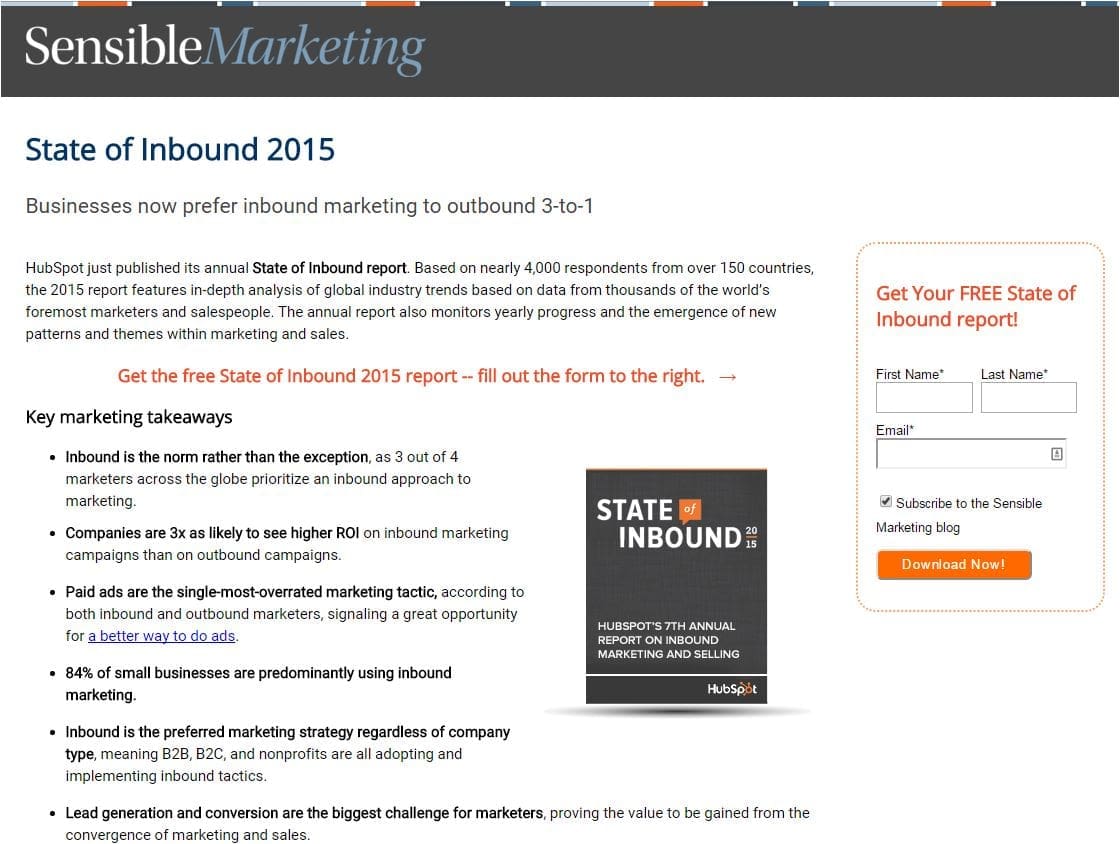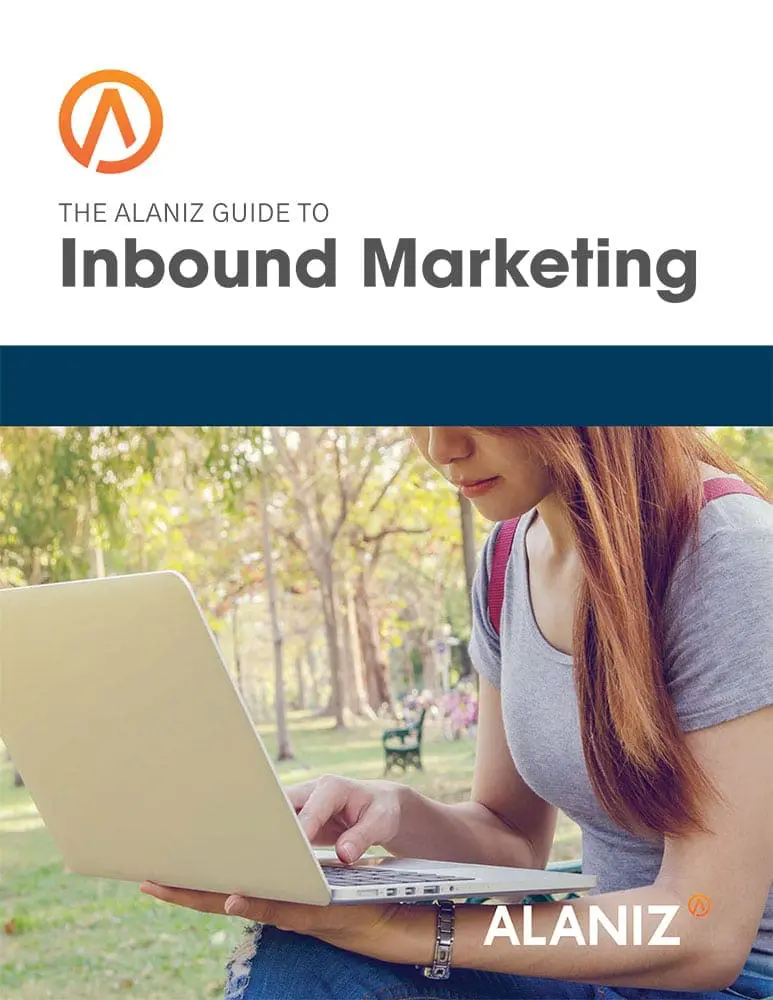This blog post is part of “The Ultimate Guide to Lead Generation” blog series.
 B2B buyer behavior is rapidly changing and forcing brands across all verticals to adjust and conform to the interactive world. The rise of Google as a common verb has flipped the traditional buying cycle on its head.
B2B buyer behavior is rapidly changing and forcing brands across all verticals to adjust and conform to the interactive world. The rise of Google as a common verb has flipped the traditional buying cycle on its head.
Humans are getting really good at blocking out all of the traditional marketing tactics. Cold calling, direct mail, trade publications, PPC ads, and even email blasts are being countered with called ID, DVR systems, ad blocker software, and smart email inboxes.
Enter the new self-directed buying process
Instead of contacting sales, B2B buyers are going to Google to find answers to their problems and questions. And if they’re looking for a recommendation, they’re going to a LinkedIn group of their trusted peers.
Successful B2B companies are developing a laser focus on their customers and their unique pains to begin to build their trust. A simple digitized version of your brochure is no longer enough.
These companies are building smart websites that are a hub of educational content that helps prospects throughout the buying process. And helps their sales teams close more deals!
4 steps to nurture first-time visitors into sales-ready leads
Step 1: Attract the right kind of visitor to your website
The process begins by creating quality content. Quality content is helpful and relevant to the pains that potential customers are facing. This content serves as a magnet that attracts visitors to your website for the first time and keeps them coming back for more.
These visitors come to your site from a search on Google, or referral by a friend or colleague, or via social media (typically LinkedIn or Twitter).
Create a blog and write a few posts
Use your company domain, mycompany.com/blog, and create this blog as simply a place to post fresh new content on your website.
Write blog posts that answer questions that your potential customers are already asking. Don’t make the mistake of writing about your company or your products/services. Write about what concerns them.
Make a habit of blogging twice a week. That means in a year, you’ll have 104 more pages on your website, and 104 new topics to entice people to visit your website and come back again and again.
Share your blog post on social media
One of the ways your prospects will find you is through social media, so be sure to share your blog post on LinkedIn and Twitter. Then you can use LinkedIn Groups to connect with others who are interested in what’s happening in your industry, and share your blog post with them. Traffic from social media will eventually turn into hot leads in your sales funnel!
Tell readers what to do next
Here is the step that is most often missed — use a call-to-action at the bottom of your post that tells your reader what to do next. You probably want them to download more in-depth, relevant and helpful information. This call-to-action links to a specific landing page on your website where they can get this great new content.
Step 2: Convert website visitors into leads in your sales funnel
Once visitors are on your website, proper content personalizes their experience and pulls them through your sales funnel. But to collect new business opportunities, you need to get their permission to start communicating with them.
Give the readers more information
This is the opportunity to expand your budding relationship. For a visitor to become a lead in your sales funnel, they need to fill out a form with at least their first name and email address, in return for the helpful content they can download. These “content offers” might be buying guides, ebooks, or industry reports that will answer their questions or make their lives easier.
(These are really easy to make. Just save a Powerpoint or Word document as a PDF, upload it to your site, and you’re ready to start collecting their contact information.)
Create landing pages
A landing page is a page on your website with a singular purpose: to have the viewer complete the desired action. Good landing pages have the navigation and sidebar distraction removed. This helps keep your site visitor focused on just the content you want them to read.
Communicate the value of your content offer in your text copy and have a form they can fill out, trading their contact information for your great content.
Make sure their name and address get added to your database or CRM. Up your game by connecting your forms and landing pages with a marketing database like HubSpot or Infusionsoft.
Step 3: Close qualified leads as customers
Inbound marketing helps to make sales teams more efficient. By spending less time following up with unqualified leads, salespeople are able to spend their time working with people who have already engaged with the content on the website. They have done their research and have a clear understanding of the pain they’re facing. Now the salesperson can serve as a resource to help identify the best solution for their problems.
Nurture your leads
Lead nurturing is the process of sending your leads a string of relevant email messages based on their behavior. This is the core of your marketing automation strategy and a great way to build a relationship with your prospect through sharing helpful content.
Use lead nurturing to follow up with your leads after they download your content, and share links with them to more helpful content.
Segment your database with lead scoring
The more personal and relevant the messages, the more they are likely to resonate with your audience. Implement lead scoring to help separate the qualified leads from the unqualified leads in your marketing database.
This will help you communicate with the ones that are ready to talk and continue to educate those that aren’t ready just yet.
Share updates and offers
Staying top-of-mind is a critical element of marketing. Use email marketing to share your latest content offers with your leads and customers.
These can be simple update messages sharing your latest product development or company achievements. They can also be emailed
with links to your latest guides, reports, and offers.
Remember, always be adding value. That’s how you stay relevant.
4. Delight your customers
Marketing doesn’t end after the sale is closed. Now it’s time to make them so happy that they start telling their friends and colleagues about you.
Use lead nurturing again to keep your customers engaged with your brand. Ask them how things are going, share customer-only offers, create a community where fellow widget enthusiasts can gather, or ask them for their feedback.
Listen and engage on social media
Listen and connect with your customers on social media. HubSpot makes this easy with their Social Inbox tool. If you don’t have HubSpot, use a tool like Hootsuite to monitor your customers’ conversations.
Add context to the customer experience
When a customer comes to your website, it should be a different experience that it was when they were a first-time visitor. Take a page out of Amazon or Netflix’ experience and utilize website personalization to better meet the needs of your customers. Use smart calls-to-action linking to customer-relevant landing pages and use smart fields to personalize the on-page copy from their name and company.
Hey, what happened to SEO?
Search engine optimization is a central component of a smart inbound marketing strategy. However, it is not, by itself, a strategy.
Conclusion
By applying these inbound marketing methods to your company’s marketing strategy, you can begin to capitalize on the B2B buying shift. This shift yields amazing growth potential for companies that embrace this new type of educated buyer.
This blog post is part of “The Ultimate Guide to Lead Generation” blog series.





